13 milk myths and misconceptions debunked
An episode of Jamie and Jimmy’s Friday Night Feast on Channel 4 a fortnight ago drew sharp criticism from farmers for turning consumers against housed dairy herds.
The reputation of the dairy industry has long been dogged by misinformation – so what are the facts?
Farmers Weekly asked Jude Capper, a livestock sustainability consultant, Emily Norton, partner in family dairy farm and Neil Baker, a farm manager, to separate some of the most common myths from the facts.
See also: Jamie Oliver and Jimmy Doherty comments fuel free-range milk debate
UK farming has some of the highest standards of animal welfare and production in the world, and dairy is no exception.
Farmers Weekly debunks 13 of the most widely shared myths about dairy farming and milk production, by asking three dairy experts to separate fact from fantasy.
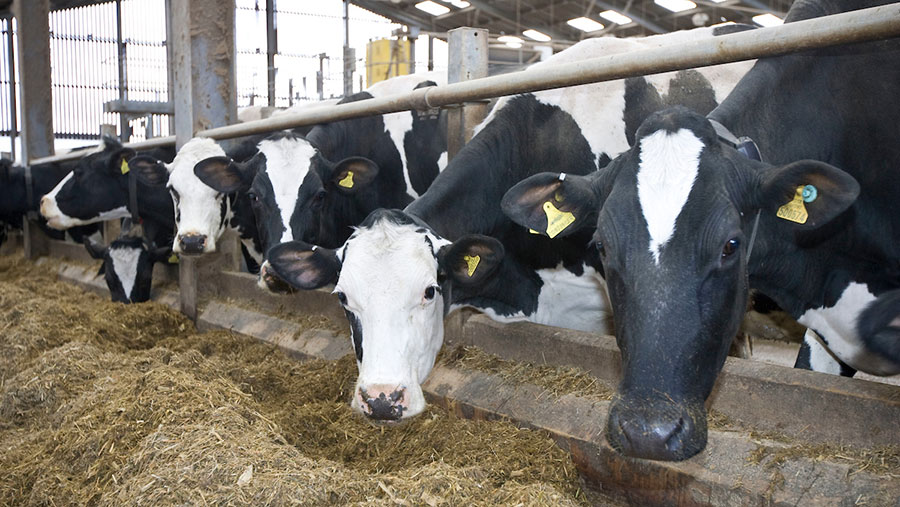
© Tim Scrivener
The panel
Emily Norton (EN), partner in family dairy farm with a BSc in sustainable agriculture from Harper Adams University (HAU).
Jude Capper (JC), livestock sustainability consultant, PhD in ruminant nutrition and behaviour from HAU.
Neil Baker (NB), farm manager at Bakers of Haselbury Plucknett, near Crewkerne in Somerset, 1,750-cow herd, milking 49,000 litres/day
The myths
- Cows locked up all year are less happy and more likely to develop lameness and mastitis
- Taking calves from their mothers is harmful
- The dairy industry is damaging to the environment
- Farmers hate their cows are cruel to them
- Cows compete with humans for food
- Male dairy calves are shot on farm
- Cow hormones in milk are damaging to human health
- Humans don’t need dairy in their diets
- Farmers use growth hormones and antibiotics
- Milk is naturally red from blood secreted into it before it’s bleached white for retail
- Cows have ankles manacled together out of cruelty (this claim has gained a lot of traction on social media sites)
- Cows collapse after bearing so many calves that they have to be lifted by their hips on a winch (a recently released activist’s video claimed this)
- Cows are “raped” by the artificial insemination process
1. Myth: Cows locked up all-year are less happy and more likely to develop lameness and mastitis
JC Scientifically, we are not really able to quantify cow “happiness” although we can measure indicators of stress, disease and contentment in dairy systems which give us good insights into individual and group cow welfare.
Housed cattle are able to exhibit all natural behaviours save for grazing within an environment that protects them from inclement weather (too hot, too cold, too wet or windy).
A cow is not automatically going to have better or poorer welfare because it is in a large versus small herd or a confined versus grazed system Jude Capper, livestock sustainability consultant
While it is true cattle will often exhibit frolicking behaviours which could be interpreted as “happy” when first turned out to pasture, they will also queue to come into the shed when it is cold, wet or windy.
A recent report by the European Food Safety Authority concluded the impact of disease on an individual animal’s welfare state does not depend on herd size or production system.
A cow is not automatically going to have better or poorer welfare because it is in a large versus small herd or a confined versus grazed system.
Science shows the risk of some diseases are higher with particular management practices, for example, increased time standing on concrete is associated with greater lameness incidence and cattle grazing pasture may be at greater risk of hypomagnesaemia and/or acidosis.
However, these types of disease may be prevented by improved management practices and the considerable variation in incidence across farms shows they are not endemic to one particular system.
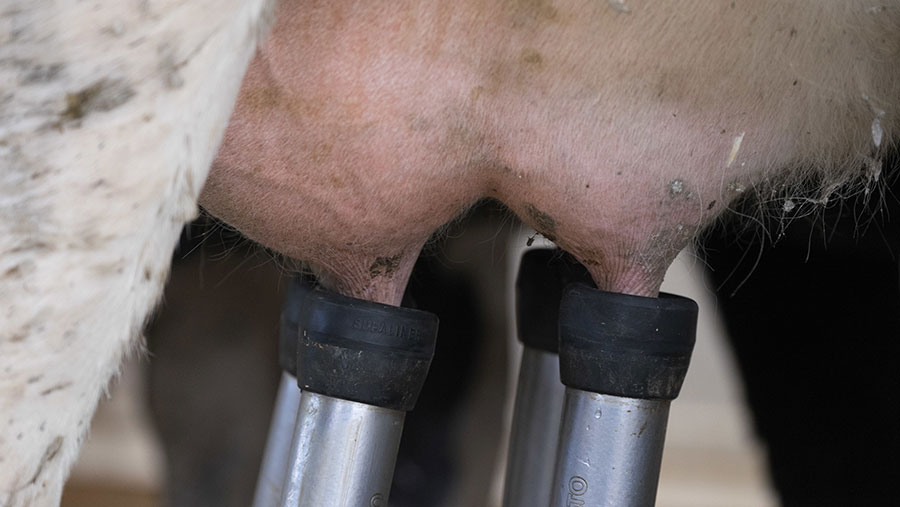
© Tim Scrivener
EN Pressure on farms from low milk prices is probably the biggest risk to animal welfare if decisions to upgrade housing and equipment are postponed.
Investment is vital to prevent welfare problems happening whatever the system.
2. Myth: Taking calves from their mothers is harmful
JC Activist groups are highly skilled at creating contentious messages which resonate with consumers and the suggestion calves are forcibly removed from the cow (with the cow often cited as bellowing for days afterwards) is a popular anti-dairy message.
Maternal ability is a desirable trait in beef cows (which often calve outside or unsupervised) but has been neglected to some degree in dairy breeding programs.
Therefore, contrary to popular belief, not all cows are interested in caring for the calf during the first crucial 24 hours of life.
Despite the controversial nature of the practice, long-term studies have shown separation from the cow does not affect social behaviours or growth of young calves Jude Capper, livestock sustainability consultant
In the majority of systems, dairy calves are removed to ensure the calf has been cleaned and dried, the umbilical cord treated, and given colostrum containing nutrients and antibodies vital for health.
Despite the controversial nature of the practice, long-term studies have shown separation from the cow does not affect social behaviours or growth of young calves.
3. Myth: The dairy industry is damaging to the environment
JC Every food we eat has an impact on resource use, greenhouse gas emissions and air, water and soil quality.
These impacts may be positive or negative, but are not confined to meat and dairy products.
Most developed dairy industries worldwide have improved productivity and efficiency over the past century, reducing the quantity of resources used and greenhouse gas produced per kilogram of milk.
Indeed, the carbon footprint of British liquid milk is 1.17kg carbon dioxide/kg [PDF] – lower than the footprint of processed fruit and vegetables, grains or meat.
We need more research when comparing with other foods. However, a recent Swedish study showed we need to consider the nutritional value of the food produced – or how much nutritional “bang” we get for our carbon “buck”.
It is nearly always a question of scale, and the ability of human ingenuity to mitigate adverse consequences Emily Norton, dairy-farming partner
Compared with alternative beverages such as soy juice, oat drink or beer, milk had a far higher ratio of nutrients provided per kilogram of carbon emissions, demonstrating we can’t simply rely on one metric (for example, carbon footprint) to identify environmentally friendly foods.
EN Dairy farming based on self-sufficient consumption and recycling of nutrients locally, particularly as part of a broader arable rotation using crops and resources that humans cannot directly consume, is actually environmentally beneficial.
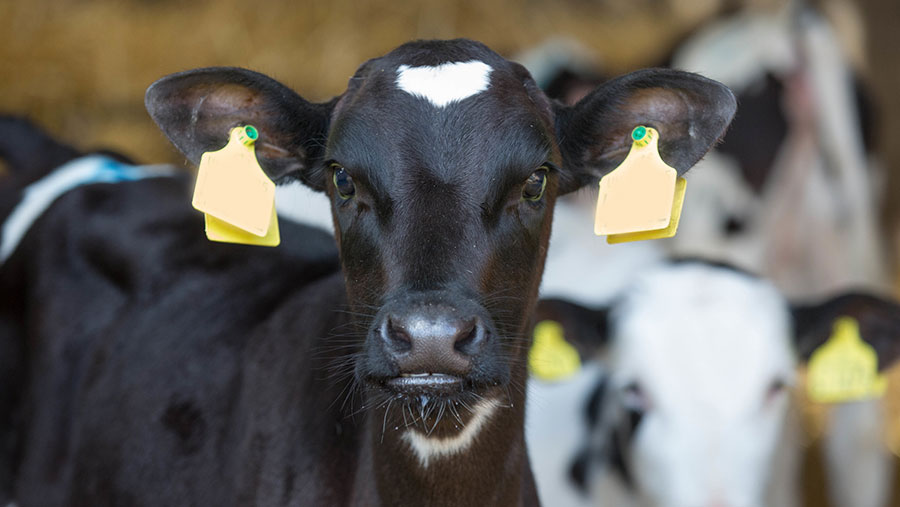
© Tim Scrivener
It is nearly always a question of scale, and the ability of human ingenuity to mitigate adverse consequences, such as setting off methane emissions against carbon sequestration in grazing meadows, or processing slurry to recover nutrients or energy via anaerobic digestion.
4. Myth: Farmers hate their cows and are cruel to them
JC I have yet to visit any dairy farm I would describe as a “factory farm”. Dairy farmers care for their cows, both because they are the foundation of their farm operation and because it’s simply the right thing to do.
Are all dairy farmers paragons of virtue who never have a cross moment and greet every set-back with a happy smile? No.
Are there any dairy farmers who don’t enjoy their job to the extent that it would be better for them and the cows if they ceased to farm? Unfortunately, yes.
We have a duty to the industry to identify and improve or remove the small proportion of producers or workers who do not treat their animals fairly and with compassion Jude Capper, livestock sustainability consultant
Yet this is no different to any other profession – we can’t pretend every teacher, doctor, mechanic and supermarket cashier is happy, fulfilled and treats their fellow workers or employees well.
We have a duty to the industry to identify and improve or remove the small proportion of producers or workers who do not treat their animals fairly and with compassion, not least because this damages the reputation of every dairy farmer.
However, we need to remember good dairy cow welfare does not mean every practice on a dairy farm would be regarded as cruelty free to the untrained eye.
The average consumer has little agriculture knowledge and therefore cannot immediately understand the rationale for practices such as forcing a cow to her feet or dehorning calves, even when the short- or long-term health or welfare implications make it necessary.
We face a dual challenge – to educate the general public about farming practices, while maintaining farming systems where we would not be ashamed or troubled by a consumer walking on to the farm on any given day.
EN I would suggest anyone who still gets up day in and day out to work with dairy cows despite the enormous challenges the industry has faced over the past 15 years must be insane or in love
Given the level of commitment it takes to be a dairy farmer, I’d say the latter was more likely.
5. The myth: Cows compete with humans for food
Activist groups often cite the quantity of feed or land used by cattle production as evidence we should not consume beef or dairy products, suggesting we could feed far more people if we grew human food crops to provide a vegetarian or vegan diet.
This is logical if we accept the assumption that billions of people would be willing to eliminate meat and dairy products from their diet, which is debatable.
However, recent research showed an entirely vegan diet reduced the number of people that could be fed from one hectare of land, because grazing and perennial cropland that would usually be used for grazing or livestock feed could not be used to generate food.
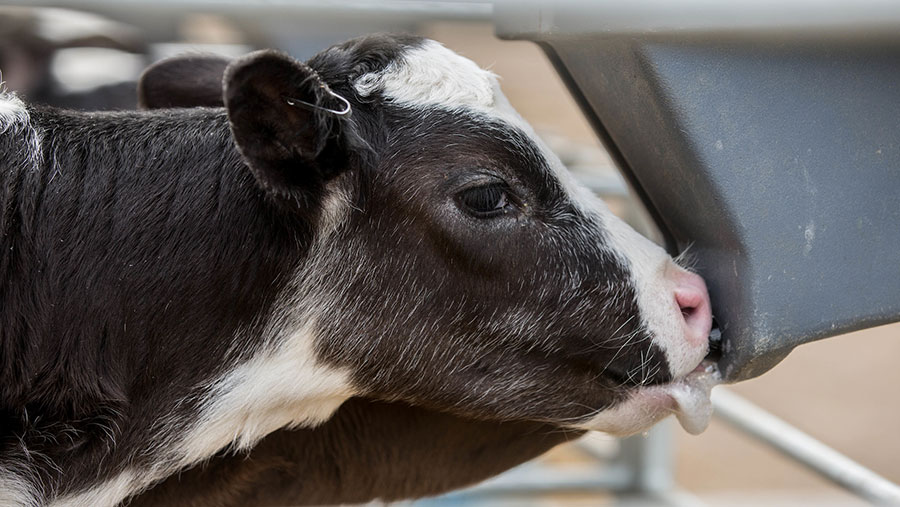
© Tim Scrivener
The capability of cattle to graze on pasture and turn forages and by-product feeds we humans cannot or will not eat into high-quality dairy and beef should not be underestimated.
Indeed, because of their reliance on pasture and forage crops, dairy and suckler beef cattle produce more human-edible protein than they ever consume – definitively not competing with humans for food production.
6. Myth: Male dairy cows are shot on farm
NB Yes, a lot do get shot, but I think it’s a small percentage and we can reduce these numbers further by improving sexed semen.
If we can construct the supply chains that need Holstein beef there are good returns available, the company which takes ours has a really good route to market that is now totally dependent on dairy-bred beef.
They also say the beef quality is as good as any other breed.
7. The myth: Cow hormones in milk are damaging to human health
JC Every food that we eat contains hormones and cow milk is no exception.
However, we need to examine whether the types or concentrations of hormones in milk and other dairy products are sufficient to have a biological impact on human health.
In countries (such as the US) which permit the use of bovine growth hormone (recombinant bovine somatotropin or rbST) in dairy cattle, there is no measurable increase in the concentration of rbST within the milk of supplemented cows and somatotropin itself is a bovine-specific protein hormone.
Hormones that are bovine-specific do not have biological effects in other species as we lack the appropriate receptors for the hormone to bind to – effectively we don’t have a cellular “lock” the hormone “key” will fit.
Moreover, when we consume protein hormones they are broken down within the digestive system into their component amino acids (the reason why insulin has to be injected) and therefore have no biological effect.
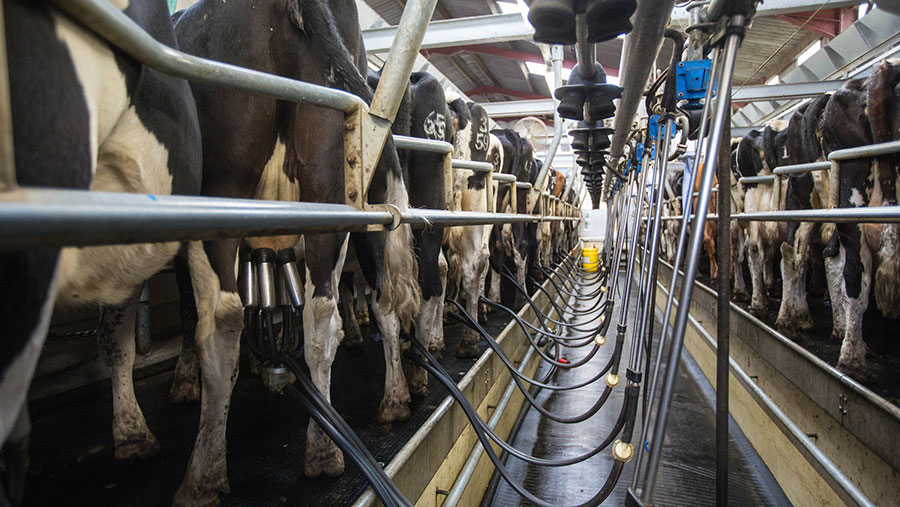
© Tim Scrivener
Milk contains steroid hormones such as oestrogen and progesterone, which, unlike protein hormones, aren’t broken down in the gastrointestinal tract.
Many anti-dairy groups try to correlate global trends in childhood obesity, reduced age at puberty, and diabetes or cancer incidence to consumption of these hormones through dairy foods, despite scientific evidence to the contrary.
We can’t dismiss consumer concerns about hormones, but when we put them into context, we can help to alleviate them Jude Capper, livestock sustainability consultant
Furthermore, milk consumption has declined per capita over time – if we could correlate dairy hormone intake with health issues we would expect to see a decline rather than an increase over the past decades.
It is crucial to note the concentration of steroid hormones within dairy products are low – for example, ice-cream contains 611 nanograms of oestrogen.
If we put it into context and compare to the contraceptive pill, which contains ~35,000 nanograms of oestrogen, the average woman would have to eat 5.7kg of ice-cream every day to equal the same amount of oestrogen as she gets from one pill.
We can’t dismiss consumer concerns about hormones, but when we put them into context, we can help to alleviate them.
8. Myth: Humans don’t need dairy in their diets
JC Activist groups often promote this myth based on the fact young animals are weaned, and few adult animals actively seek milk as a food, therefore suggesting we should wean ourselves from dairy post-infancy.
It is true that, as humans, we don’t specifically need any particular food, as we actually require a mixture of nutrients that can be obtained from a variety of foods.
See also: England rugby star Joe Marler credits whole milk for miraculous recovery
Many of the “dairy alternatives” on the market contain far fewer essential daily nutrients and are often associated with a higher environmental cost Jude Capper, livestock sustainability consultant
However, dairy products provide a balanced package of essential nutrients that are readily available to humans (unlike, for example, many plant proteins) and that convey additional benefits in terms of micronutrients such as conjugated linoleic acid that act as anti-obesity or cancer-preventive agents.
By contrast, many of the “dairy alternatives” on the market contain far fewer essential daily nutrients and are often associated with a higher environmental cost.
9. Myth: Farmers use growth hormones and antibiotics
JC Supplemental growth hormones are used in some regions of the world (including the US), but have not been registered or approved for use in livestock within EU countries, therefore this myth is utterly incorrect when referring to EU-produced meat or dairy products.
Where appropriate, antibiotics are used in livestock to prevent and treat disease, thus improving animal welfare and ensuring a safe food supply.
However, concern exists regarding the overuse of antibiotics within veterinary and medical sectors.
As antimicrobial resistance becomes a significant global issue, dairy producers, animal health industries and researchers worldwide are working to eliminate medically important antibiotics from livestock production, while seeking alternative treatments to ensure than animal health and welfare is maintained.
10. Myth: Milk is naturally red from blood secreted into it before it’s bleached white for retail
JC A photo recently circulated on social media of a jar in a milking parlour containing what purported to be blood-stained milk – given that most consumers haven’t seen a cow being milked and have an inherent mistrust of the unknown it’s not entirely surprising it was believed to be true by some.
The truth is cow’s must still be milked if they have mastitis or a teat issue, then their milk is diverted to a separate tank and poured down the drain.
Some myths relating to dairy production are difficult to refute because they contain a grain of truth, others because they are so ridiculous it’s difficult to take them seriously.
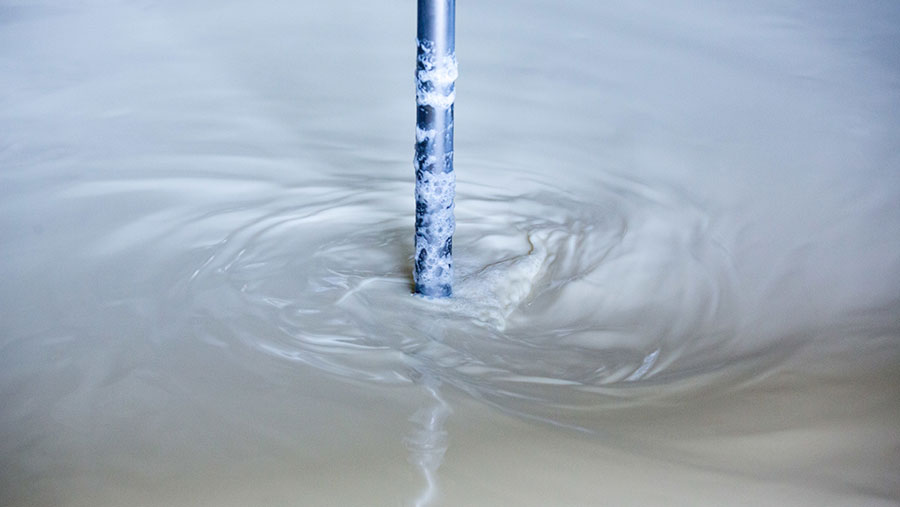
© Tim Scrivener
These types of myths are difficult to dispel with science – we don’t usually build up resources to dispel myths that would seem to us in the dairy industry to be utterly inane.
Some myths relating to dairy production are difficult to refute because they contain a grain of truth, others because they are so ridiculous it’s difficult to take them seriously Jude Capper, livestock sustainability consultant
However, this is an excellent opportunity to bust myths by inviting consumers to take part in farm visits or events such as Open Farm Sunday, or simply posting photos and video clips on social media.
If we build up enough freely available information and resources so the consumer’s knowledge level turns from: “That could be true, I don’t know what raw milk looks like” to “Don’t be silly, everybody knows milk is white when it comes out of the udder”, future scaremongering tactics will have a far lesser impact.
11. Myth: Cows have ankles manacled together out of cruelty
EN The only time a cow could have a shackle is if she had an injury to her leg for example, and required the additional stability in order to stand.
They stop cows from slipping over and making injuries sustained from things, such as calving, any worse.
Shackles are a terrible name for a practical part of milk production and certainly not associated with any certain dairy system Neil Baker, farm manager
In this case, it would be temporary and of necessity, and never ever out of cruelty.
NB Shackles are a terrible name for a practical part of milk production and certainly not associated with any certain dairy system.
When I was a kid, on a farm which had 200 4,000-litre grazing Friesians, we had shackles on more cows then than I have today. Cows don’t care about them at all as soon as they are used to them.
We don’t put them on for fun, we put them on as they aid a cow’s recovery. Are they left on too long in some farms? Yes.
Should they have a new name? Yes. Should farms with high usage analyse issues causing this on their farms and do something about it? Yes.
12. Myth: Cows collapse after bearing so many calves they have to be lifted on a winch
EN Generally, any collapse before the end of a productive life is not a good outcome for the farmer or the cow.
Bearing in mind that the average day cow weighs more than 500kg though, a winch may be essential to lift her if she is not able to stand by herself.
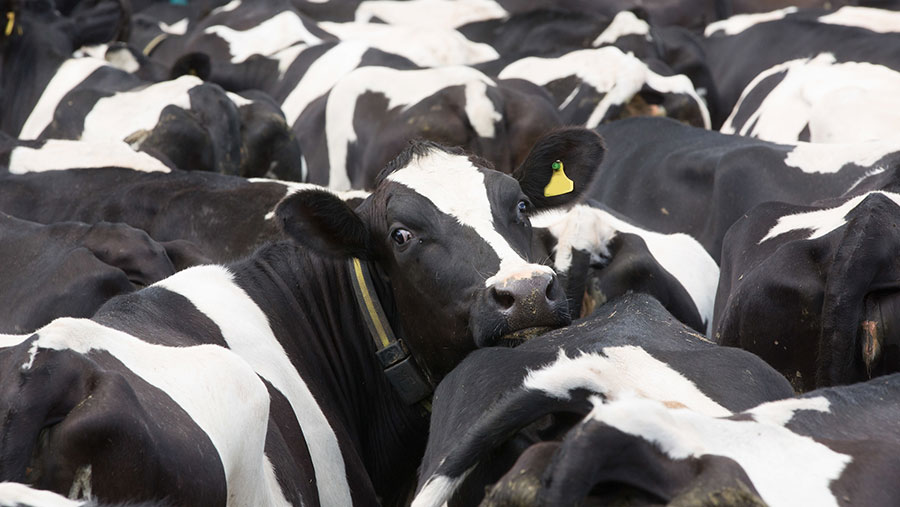
© Tim Scrivener
NB Hip lifting is a thing but pretty rare, sometimes cows need a bit of help – should we just shoot them if they go down?
13. Myth: Cows are “raped” by the artificial insemination process
JC Rape is one of the most powerful and emotive words used by activist groups because of the images it engenders of violation, loss of control and pain.
Farmers cannot ask cows for their “consent” to be inseminated but by closely observing behavioural changes consistent with the cow being in oestrus, we can ensure it is inseminated at the most appropriate time in terms of health, welfare and biology
Cows won’t stand to be inseminated unless in oestrus and it would be an entirely futile procedure trying to force an insemination on a cow who is not in the correct biological state to conceive.
EN With natural insemination, at the height of fertility crucially she will stand still for the bull to mount her.
Artificial insemination mimics this process without the dangers inherent in handling bulls.
The cow makes it very clear pregnancy is her desired outcome, so suggesting it is somehow “rape” or non-consensual is wrong.
